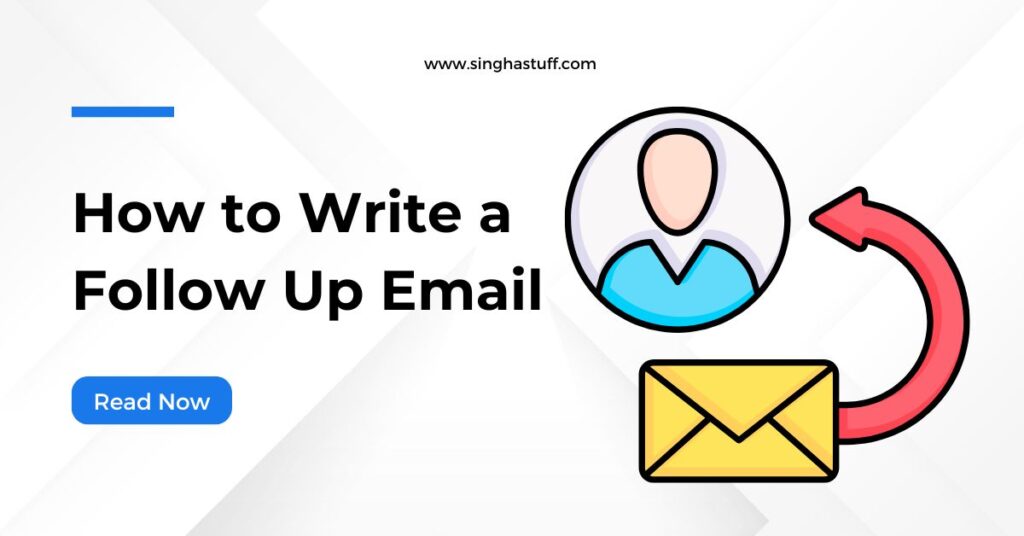A follow-up email after an interview, meeting or job application will make you more noticeable than others. To get a reply, your message should be understood easily, polite and not difficult to understand. We found that many follow-up emails often go unread.
We will explain how to write a follow up email that results in a response using simple advice, good examples and effective methods.
Why Follow Up Emails Matter
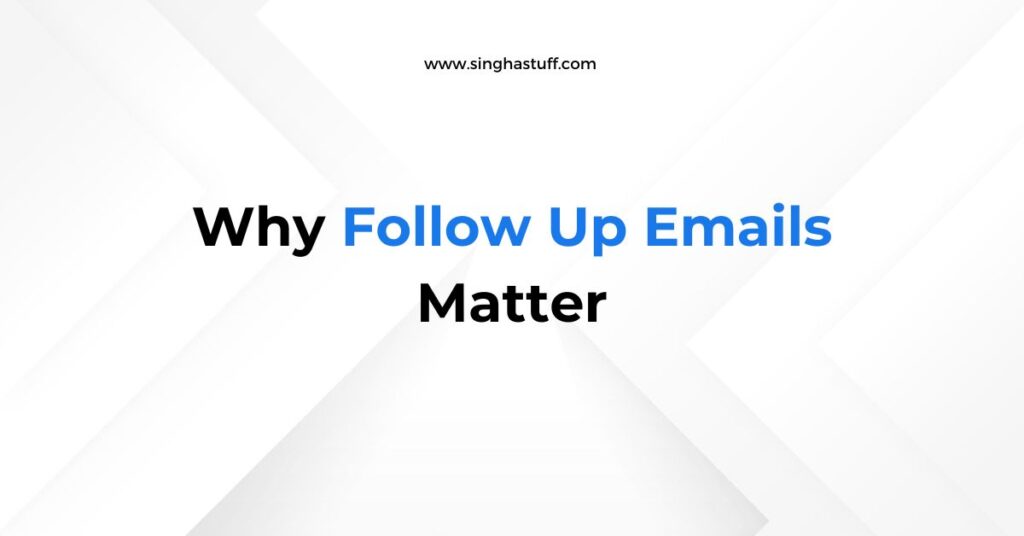
A great follow-up email helps you get a response. It proves you are committed, behave professionally and consider how the other feels about their time.
It makes it possible to keep talking after the first words. For any purpose such as looking for a job, concern or fresh opportunity, a follow-up email helps.
Even so, many people have difficulty responding in a good follow-up way.
In most cases, they write lengthy messages, postpone contacting or sound demanding.
Let’s forget all about those points.
When making a larger plan, study the Email Marketing Customer Journey, because this helps contextualize your actions and makes people more likely to respond.
When to Send a Follow Up Email
Timing matters. Send your follow-up email:
- Within 24 hours after a job interview
- If you don’t get an answer to your application or message after 5–7 business days
- After every 2–3 weeks keep in touch about career opportunities, unless you find the job (only do it if you wish to).
How to Write a Follow Up Email That Actually Gets a Response
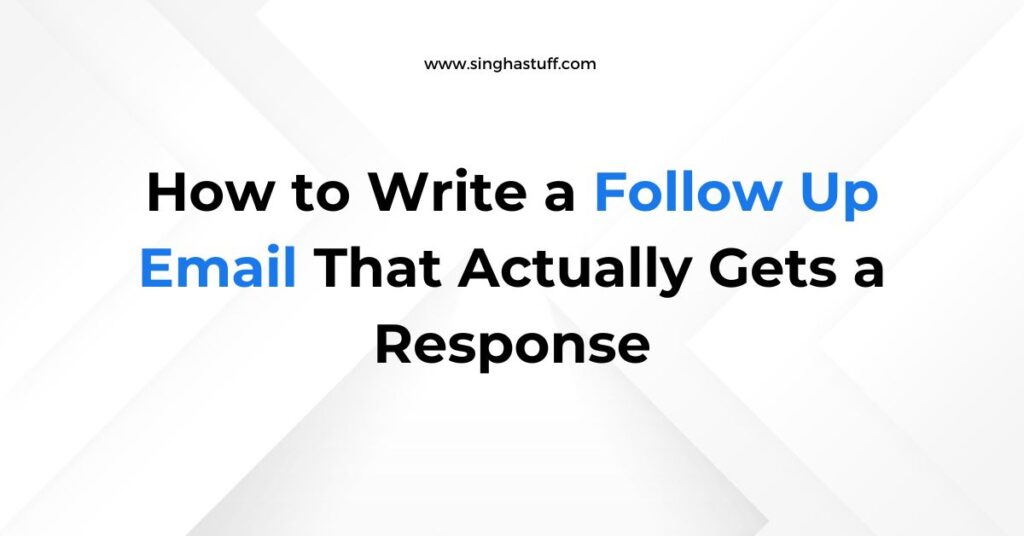
Here is how you write a strong follow-up email step-by-step:
1. Use a Clear Subject Line
Your subject line should be short and direct. Avoid vague titles like “Just following up.” Instead, say:
- “Follow-Up: Marketing Associate Interview – John Smith”
- “Quick Check-In Regarding Sales Role”
- “Thanks for Meeting – Looking Forward to Next Steps”
These subject lines make the reason for your email very clear to the recipient.
2. Start with a Polite Greeting
Try to use the other person’s name if you know what it is. Stick to a formal way of writing unless it was a relaxed exchange.
Examples:
- Dear Ms. Patel,
- Hello John,
- Hi Dr. Lee,
Always make sure the names and titles are spelt correctly. Getting the right name is the reminder we are doing something right.
3. Thank Them for Their Time
Show gratitude at the beginning of your email by thanking the person for talking to you or looking at your application.
Example:
I appreciate you talking to me about the digital marketing role yesterday. I truly enjoyed our conversation and learning more about the company’s goals.
4. Mention Something Specific
Refer to something that happened during your conversation or interview with them. It shows interest in the conversation and the other person will have a better way to recall you.
Example:
I appreciated learning more about your upcoming product launch and your need for a social media manager with campaign experience.
5. Reaffirm Your Interest and Strengths
State why you would be a fit for the role and the company. Be sure that you only use a highlight of your experience from the resume. Choose 1–2 most important skills for this position.
Example:
Because I led successful cross-platform campaigns in my last job and raised engagement by over 60%, I believe I can support your team well.
6. Politely Ask for the Next Step
Help them find the options to get involved easily. Show your interest in getting their answer or ask them another question.
Examples:
- I look forward to hearing about the next steps in the hiring process.
- Please let me know if there’s anything else I can provide.
- I’d appreciate any updates you can share.
7. Keep It Short and Friendly
Efficient follow-up emails have 4–6 sentences. Prevent paragraphs from being too long or having many details. Respect their time.
8. Add a Clear Sign-Off
At the end of your email, use a polite sign-off and give your contact information.
Examples:
- Best regards,
- Thank you again,
- Sincerely,
Follow this with your name, phone number, and email.
Sample Follow Up Emails
1. After an Interview
Subject line: Thank You – Interview for Content Writer Role
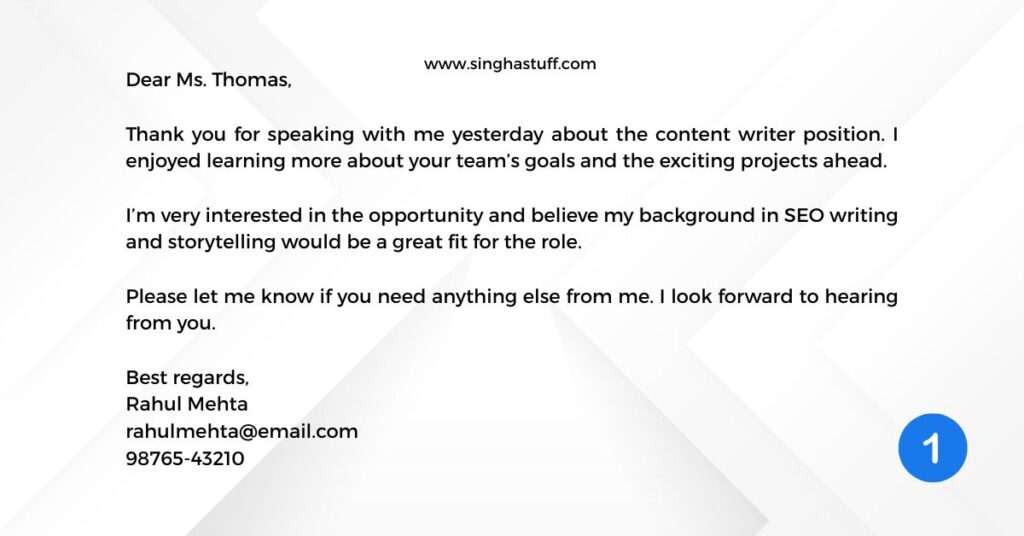
2. After No Response
Subject line: Checking In – Graphic Designer Application
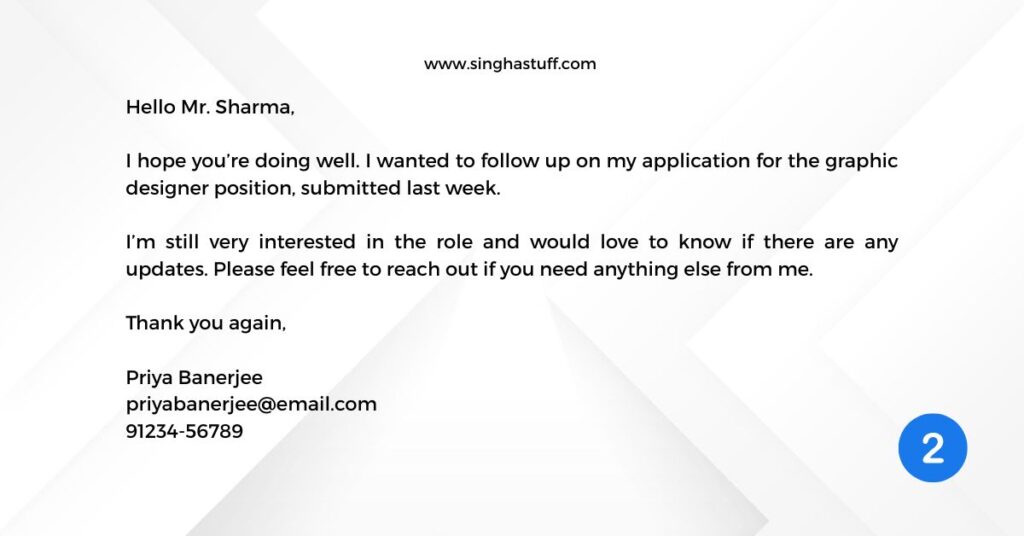
3. Staying in Touch After Rejection
Subject line: Thank You and Staying in Touch
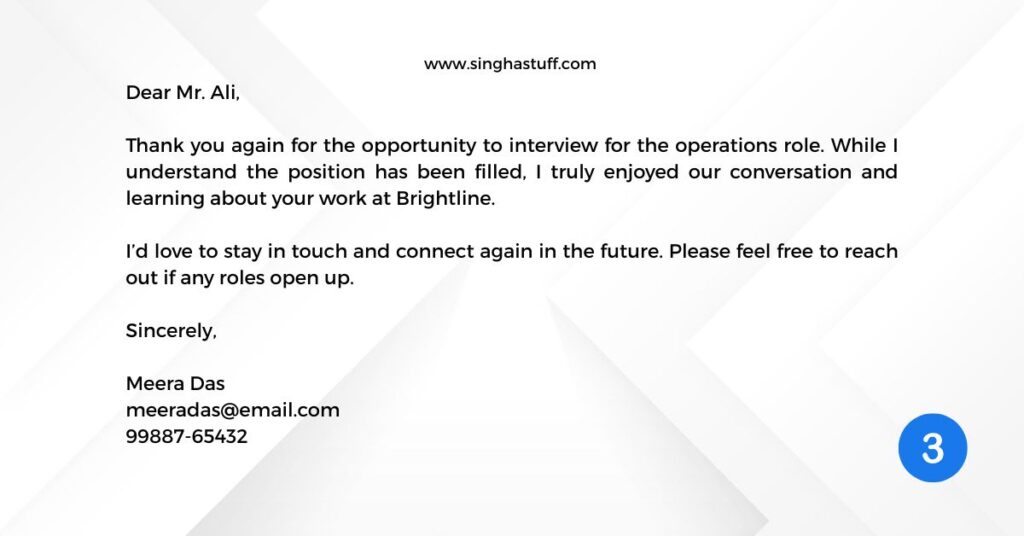
Common Follow-Up Mistakes to Avoid
Well-crafted emails can still be overlooked if you do these things.
- You wait too long: Either send your thank you note or email twenty-four hours after the interview session.
- You sound too casual or too formal: Stick to the tone that they are using.
- You send a generic message: Change the experience up every time you use it.
- You follow up too often: Unless the person tells you to respond sooner, leave at least 5–7 days between sending emails.
- You don’t include contact info: Making sure your phone and email is at the end is always a good tip.
Final Tips for Writing Follow Up Emails That Work
One last read before submitting makes sure there are no errors. Typing errors leave a negative mark.
- You should send 2–3 follow-up emails when it makes most sense, since this leads to the highest number of replies.
- Create an email address from your company’s domain name.
- Talk in a polite and encouraging manner.
- Do not hurriedly write your ideas, write them with self-assurance.
- Finish the email with a simple next action (what you want them to do).
Conclusion
Now you have learned how to write a follow up email that people will respond to.
Try to have a clear subject, make your message personal, do not write much and highlight how you match what the job wants.
After an interview or trying to keep in contact, anything you communicate can remain on their mind.
Keep up a good manner, confidence and speed—one email may be all you need to get the interview.
FAQs
How do you politely write a follow-up email?
Thank the person for their attention, say why you’re mailing them and see if they have some updates for you. Talk to participants in a polite manner.
How do you write a follow-up email after no response?
Wait for about 5–7 days, then send a short message to see how they are feeling and offer to answer any more questions.
How do I professionally say I’m following up?
You can say: “I’m checking in regarding our last conversation” or “I wanted to follow up on my application/interview.” Talk in a way that is always polite and understandable.
How to write an email for a follow-up meeting?
Talk about the purpose of the meeting, set a date and time and make sure it fits with their schedule. Make your message easy for everyone to get.

